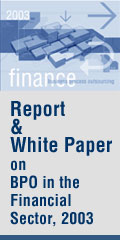|
|
BIS Quarterly Review, September 2008
(Period covered in the Overview is from end-May 2008 to 22 August 2008)
Special features
The inflation risk premium in the term structure of interest rates
Break-even rates derived from inflation-linked securities markets are increasingly used as indicators of inflation expectations. However, since break-even rates reflect both expected inflation and risk premia that compensate investors for inflation risk, the identification and quantification of such premia are important. Building a dynamic term structure model based on an explicit structural macroeconomic framework, Peter Hördahl of the BIS estimates inflation risk premia in the United States and the euro area. He finds that inflation risk premia have been relatively small but positive over the past decade, and have exhibited an increasing pattern with respect to maturity for the euro area and a flatter one for the United States. Mr Hördahl also finds that inflation risk premia tend to vary over time, mainly in response to fluctuations in economic growth and inflation.
The development of money markets in Asia
The depth and breadth of money markets in Asia have improved significantly over the past decade, yet many are still characterised by segmentation and a low degree of cross-border integration. In their overview of the development of money markets in Asia, Mico Loretan and Philip Wooldridge of the BIS find that the underdevelopment of Asia's money markets actually worked to the region's advantage during the recent turmoil by insulating it to some degree from the shocks that disrupted more developed money markets. Nonetheless, the turmoil provides authorities and market participants in Asia with an opportunity to learn from experiences elsewhere in their efforts to realise the full benefits offered by well functioning money markets.
Reducing foreign exchange settlement risk
Much progress has been made in reducing settlement risk in foreign exchange markets, particularly since the establishment of a specialised settlement institution (CLS Bank) in 2002. In his special feature, Robert Lindley of the BIS examines the results of a survey carried out in 2006 for the Committee on Payment and Settlement Systems (CPSS) by 27 central banks. FX settlement exposures are sometimes still significantly large and not always well managed. The author concludes that it is particularly important that prudential regulators promote effective management of the risk by market participants.
The ABX: how do the markets price subprime mortgage risk?
ABX indices, which are based on credit derivatives written on mortgage-backed securities, have become a key barometer of subprime mortgage market conditions during the recent financial crisis. After providing a brief overview of ABX indices and how they work, Ingo Fender of the BIS and Martin Scheicher of the ECB apply regression analysis to investigate the relationship between observed index returns and proxies of default risk, interest rates, market liquidity and risk appetite. The authors conclude that declining risk appetite and heightened concerns about market illiquidity have provided a sizeable contribution to the observed collapse in ABX prices since the summer of 2007.
<<< GO TO FIRST PAGE
BIS Annual Report 2008: Policymakers face the difficult task
Basel Committee announces steps to strengthen banking system
Basel Committee announces steps to strengthen banking system
Global credit quality worsens in first quarter 2008
Current challenges in the global financial markets
Highest levels of political and economic uncertainty in 2008
CLICK FOR MORE FEATURES & STORIES

|
|


|